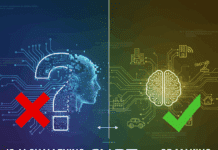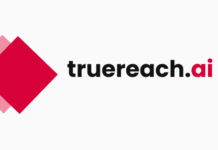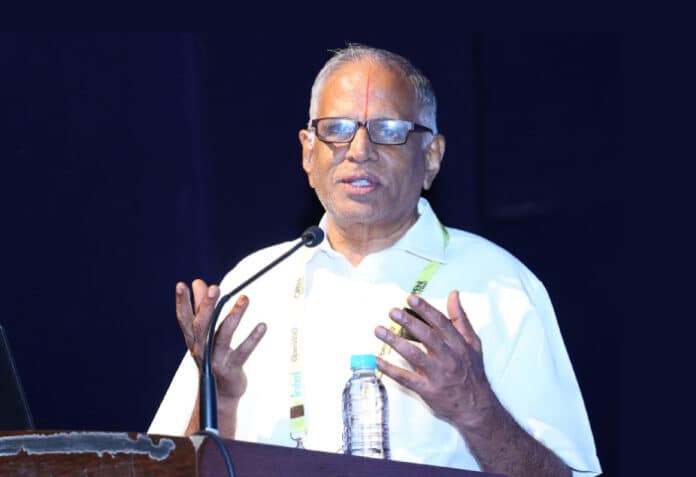India has been a ‘downloading nation’ for many decades, though our IT services organisations have made the country proud. But the time is now ripe to turn into an ‘uploading nation’ by contributing to global open source software. This is what Prof. S. Sadagopan opined when he spoke at Open Source India last October. The founding director of the Bengaluru-based IIITB (he served the institute from 1999 to 2021) also outlined the work done by this great institute in the domain of open source.
After BSNL launched the consumer internet in 1995, everyone started downloading whatever they wanted — annual reports, course materials, the Vedas or cooking recipes. Downloading made lives much easier. Today, India is a nation of developers and we are coders for the world. But the question is: If we are a developer nation, why are we only downloading and not contributing to open source? Thankfully, while this was a bitter truth a decade ago, it is not so anymore! Today, open source has matured enough for countrywide growth and adoption across various sectors in India, and is making inroads into domains like education, healthcare, land and property management, and even drug discovery.
Open source does not need any kind of aggressive selling today, but there was a time when it was caught in the middle of religious wars in the tech world. Big companies like Microsoft were not very supportive of the open source movement. These attitudes are now a thing of the past, and open source is widely accepted today.
In the 1960s and 1970s, the concept of open source was almost mystical and challenging to us. Our PhD and master’s theses often included program listings as an appendix, showcasing the tradition we come from. (Program listing is the complete listing of a computer program, source code, and all files that make up the program.)
In the 1980s, Richard Stallman initiated the free software movement. Stallman had his following, but his push for everything to be free was challenging because people still needed to make money. The open source movement then evolved into a more practical approach, acknowledging the need for financial viability. For instance, before the advent of routers, I built one in my lab by installing two network cards in a PC and used open source software from the US-based MIT.
The emergence of Linux marked a significant milestone in the open source journey. In India, the Centre for Development of Advanced Computing (C-DAC) developed fonts in Kannada, Telugu, Bangla, etc. This is how it all started.
In the last two decades, there has been a complete transformation in every aspect of the user interface and the software value chain. Open source has established dominant players in various segments. For operating systems, we have Linux; in programming languages, PHP and Python stand out. MySQL leads in databases, Apache in servers, Firefox in browsers, and LibreOffice in office suites. The Android operating system, which needs no introduction, is everywhere. The community aspect has also flourished, with platforms like GitHub fostering numerous open source communities.
The journey of open source in India
Open source has impacted everything and is providing solutions daily. Whether you know it or not, open source is a part of everyone’s life. Everyone using a mobile phone is consuming some form of open source. Here is how India is making a mark in this domain.
Open education: Education has benefited a lot from open source. MIT’s OpenCourseWare is a pioneering example of open source educational content. With over a billion views, it has made high-quality educational material accessible to a global audience.
Similarly, in India, the NPTEL (National Programme on Technology Enhanced Learning) is an excellent example of the impact of open source on education. Coordinated by the IITs and IISc, NPTEL offers over 600 certification courses across 22 disciplines. It has become one of the largest educational programmes to be downloaded on YouTube, offering 56,000 hours of content in English and an additional 12,000 hours translated into various Indian languages.
These platforms exemplify how open source can democratise education, making high-quality learning resources available to anyone with internet access.
Drug discovery: The Open Source Drug Discovery (OSDD) project, which began in Bengaluru, is an initiative funded by the Council of Scientific and Industrial Research (CSIR). CSIR oversees a network of 43 labs under its banner. Since its inception in 2008, OSDD has received about 35 million dollars in funding and has engaged nearly 500 contributors.
Drug discovery traditionally involved significant time and financial investments — typically around a billion dollars and seven years per drug. However, the OSDD project has significantly revolutionised this process. By leveraging the collective intelligence and collaborative efforts of a wide range of contributors from diverse fields, OSDD has managed to reduce both the cost and the time required for drug discovery. What used to take years now takes just a few months, with costs reduced drastically. This dramatic reduction in time and cost is a testament to the power of open source methodologies in pharmaceutical research.
ONDC: The core objective of the Open Network for Digital Commerce (ONDC) is to empower around 12 million small shopkeepers and sellers to harness the benefits of online presence. The aim is to simplify the process of going digital for these businesses. Instead of requiring complex software setups or the need for technical personnel, these shopkeepers can manage their online services by just pressing a few keys on their mobile phones. This level of accessibility and ease of use is what makes ONDC a powerful tool — and it’s built on an innovative protocol, which is worth exploring.
Maya OS: The indigenous Maya OS operating system is expected to be used by all branches of the Indian Armed Forces. The adoption of Maya OS by such a critical and extensive organisation is a significant step. It showcases the growing reliance on advanced open source technology and software within essential national sectors like defence, and underscores the importance of technological self-sufficiency and security in these areas.
Aadhaar- the national ID: Aadhaar, the systems for which were initiated in India around 2009, was successfully deployed as a UID in 2014 and is a landmark project. Developed for the Indian government with taxpayers’ money, it has achieved population-scale digital infrastructure that has been managed from within India.
Between 2009 and 2014, cloud technology matured significantly. While Aadhaar benefited from this, it couldn’t fully utilise the cloud’s capabilities then. Similarly, software development methodologies and microservices architectures were not as advanced as today, limiting Aadhaar’s full potential in these aspects.
Beyond software: Open source has expanded beyond software into hardware. IIITB and NIMHANS are collaboratively contributing in this regard. Prof. Madhav Rao from IIITB and Dr Vikas Vizhayil, a neurosurgeon at NIMHANS, are together working on robotic brain surgery. An exoskeleton machine for individuals with severe back issues, who can’t get up on their own, is being developed. It’s designed to learn from the user’s movements and walk with them. The machine is currently being tested, and the design will be open sourced, thanks to Prof. Rao’s efforts.
Since 2018, our focus has also expanded to include chip-level design, with some of these designs being made open source. All this reflects a shift in thinking about open source – it’s not just about software anymore. The artificial division between hardware and software is becoming obsolete.
| IIITB: The flag bearer |
| IIITB has contributed significantly to and benefited from the open source ecosystem. Here are its key contributions, as recounted by Prof. Sadagopan.
Open source education Alongside contributing to open source projects, IIITB has made its courses open, and is also involved in the OpenCourseWare movement. Modular Open Source Identity Program (MOSIP) On December 21, 2017, representatives from the Indian Software Products Industry Round Table (iSPIRT) came to IIITB with a request from several countries to create an ID system similar to Aadhaar. They came to us seeking connections with other institutes like IITs, but the conversation led to the realisation that IIITB could contribute to this project. My experience with the Unicode forum and connections in Berkeley and MIT could be leveraged. So, with backing from the Tata Trust and the Bill & Melinda Gates Foundation, and in conformance with the FCRA (Foreign Contribution Regulation Act), we started the project in Bengaluru. This was the first time an academic institute in India had embarked on a project of this scale and nature. The project was named Modular Open Source Identity Program (MOSIP), which is now an international initiative. Along with software and documentation, it also focuses on ecosystem development, involving experts like Krishnan Rajivopalan in standards development. Among the nine countries that have signed up, at least 3-4 have already completed their implementations. Over a hundred billion IDs have been generated. eGov Foundation Digit for tax collection DIVOC |
Miles to go…
India is gradually making significant strides in various sectors, including education and healthcare, by leveraging open source solutions, but there are miles to go.
A critical area being explored is the open sourcing of academic assessment processes. In a country with 1.4 billion people, any large-scale assessment like the JEE exams presents logistical challenges. The aim is to streamline processes such as exam scheduling, registration, distribution of hall tickets, and more, using open source solutions. This approach could revolutionise how large-scale academic assessments are conducted.
In healthcare, following the success in vaccine distribution, we are looking at extending open source methodologies to manage health records and other tests. The Indian government’s initiatives in health management are also embracing these approaches.
In the area of land and property management, land records across cities can be standardised by integrating them into systems like DigiLocker, ensuring easy and secure access to property documents.
Despite these advancements, we’ve only begun to scratch the surface of what open source can achieve in India. We’ve seen only 5 to 10 per cent of its true potential. The journey ahead, covering the remaining 90 to 95 per cent, is still long and filled with opportunities.
The time is ripe for action, so every developer should pledge to contribute to open source through coding, documentation, community support, or any other value addition to the open source ecosystem. This is not just a call to engage with technology, it’s an invitation to be part of a transformative movement where India becomes an ‘uploading nation’.
This story has been written by Shivangi Kharoo, technical journalist at EFY, based on Prof. S Sadagopan’s speech at Open Source India 2023.
















































































